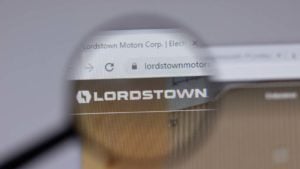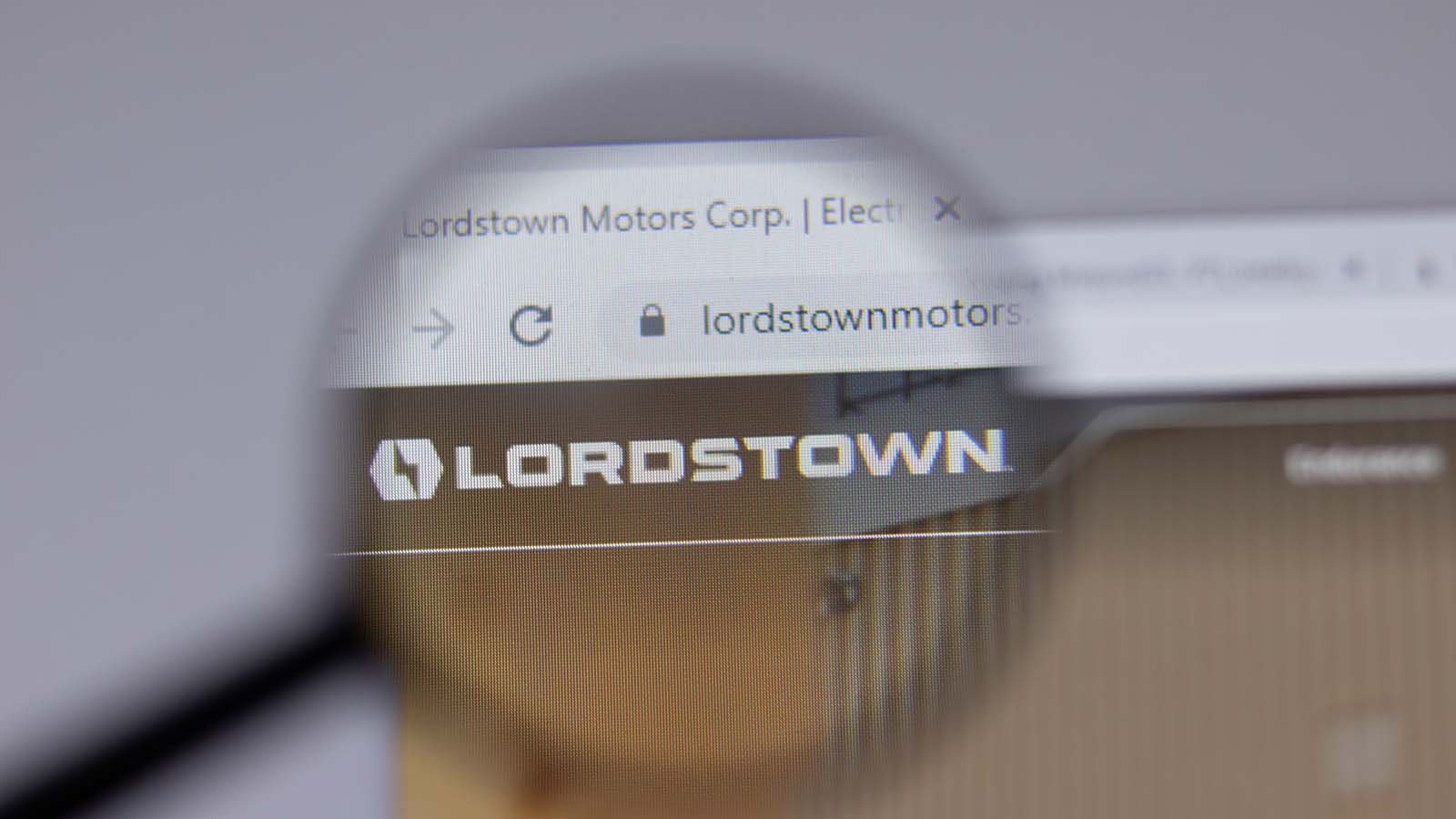I have to admit, you have to admit – almost anyone with hope for a Rust Belt recovery would have to admit – that the story of Lordstown Motors Group (NASDAQ:RIDE) and RIDE stock warmed the heart. What a promise for the Heartland! All signs pointed to success for the effort, which promised to convert a mammoth, abandoned plant built by GM (NYSE:GM) into an electric vehicle nirvana.

This in the process would create a new identity for Lordstown, Ohio that CEO-founder Steve Burns dubbed “Voltage Valley.”
And if anyone seemed to boast the bona-fides to do it, Burns was the man.
An anti-Elon Musk of sorts, Burns represented a roll-up-your-sleeves kind of guy. Dressed in a frumpy down vest, he took a logical next step years after founding another EV outfit, Workhorse Group (NASDAQ:WKHS).
One of his Lordstown prototypes even went on display at the White House in September 2020. That moved Donald Trump to take a break from his abrasive political Tweets to ooh and ahh as Burns beamed with pride. Imagine: A vehicle not powered by gasoline! Or Liberals! Or QAnon!
No more. With Burns gone, the million-volt question is what happens next to Lordstown and RIDE stock. For now, the answer remains too scary for many portfolio pundits to ponder.
And it speaks volumes about the dark side of last year’s craze for special purpose acquisition companies, or SPACs. The EV space is full or fledgling companies funded by these reverse mergers. But forget motor vehicles. It’s now fair to ask whether these financial vehicles exist more to make ground-floor investors rich, as many market observers now contend.
RIDE Stock: From SPAC to Splat
DiamondPeak Holdings Corp. funded the ascent of Lordstown Motors, and investors made out big time. Despite a disappointing home stretch, the former DPHC on the Nasdaq exchange finished up by 85% between Aug. 1, 2020, and Oct. 26 of that year, when RIDE arrived on the Nasdaq.
Moving forward, the momentum continued. Burns touted the 27,000 advance orders for Lordstown’s Endurance pickup truck, the same one that got Trump’s vote (without any fraud accusations to accompany it). But as for fire, that’s another story. An Endurance prototype burned up in February.
Then Burns resigned in June following an investigation by Lordstown’s board, which determined that there were “issues regarding the accuracy of certain statements regarding the company’s pre-orders.”
Since its debut, RIDE stock is off more than 40%. The company may not have enough cash to survive 2022. It has no revenue. And if even 1,000 Endurance pickups get produced by the end of the year, those running Lordstown Motors in the post-Burns era will consider it an EV victory.
From EV Dream to Investor’s Nightmare
So what happened? Leaning on a tradition that predates suspect mule trading in the time of Christ, Burns sold the transport dream before the reality. That doesn’t automatically make him a purveyor of snake oil as opposed to motor oil. (Though if he sold the latter, that would be troubling, as EVs don’t have internal combustion engines.)
As for RIDE stock, it may well mean he got caught up in the vision. Like so many an entrepreneur, maybe he believed and believed and believed in hopes the dream would materialize. Remember Steve Jobs and his “reality distortion field”? Or Musk himself, who somehow got investors in Tesla (NASDAQ:TSLA) to keep the faith through years of profitless quarters.
Burns wasn’t the only dreamer. The former president wanted Lordstown Motors to succeed. So did Wall Street. So did embattled Ohio residents cast adrift by GM plant closings. Even GM invested $75 million in the company – perhaps in good faith but definitely to deflect withering political criticism over closing its former plant.
And, yes, I believed too: not to the point of investing in RIDE stock, but definitely enough to cheer Burns on in numerous InvestorPlace pieces.
Yet feel-good narratives hardly square with the story of executives apparently dumping RIDE stock ahead of a disastrous March earnings report.
The Wall Street Journal reported in late June that Chuan “John” Vo sold 99.3% of his vested equity, pocketing more than $2.5 million. Even the company’s current president, Rich Schmidt, sold 39% of his vested equity in February for $4.6 million. He used some of the money to expand a turkey-hunting farm in Tennessee.
Now how about that? By golly I reckon that sure beats keeping one’s money in a turkey EV maker.
A Fairy Tale With a Grim Ending?
As RIDE stock perfects its new role as a Nasdaq bottom feeder, I can see only a shred of solace here. Nikola Corp. (NASDAQ:NKLA) has somehow hobbled along after a bombshell report in September 2020 revealed fraudulent claims made by then CEO Trevor Milton about a Nikola One prototype truck filmed in a video.
“This thing fully functions and works, which is really incredible,” Milton said at the time.
Except it didn’t: It was a shell coasting down a hill. Milton resigned in disgrace.
The parallels are compelling. The short seller that issued the Nikola report, Hindenburg Research, is also behind the revelations that Lordstown’s pre-order statistics were probably way overinflated. GM also had business connections to Nikola.
To be sure, Nikola survived its scandal. In fact, NKLA stock is up 1.75% this year. A trifle, but at least not a full-blown implosion.
Nikola stalwarts who bought the monstrous dip are betting that the company will somehow, some way, produce something that starts up and turns electrons into electric profits. No doubt RIDE stock offers the same temptation. Value investors would see the “buy low” logic – but only to a point. To assume a stock is undervalued means, uhm, that the company has any value to begin with. Or that it ever will. Lordstown’s profits to date? Bupkis.
Is the RIDE stock story over, then? I’d have to think so. No doubt, it proved a happy ending for those who invested in the SPAC. Many only sought to cash out as soon as Lordstown Motors went public. But what about the local economy, a disgraced founder, those who championed a green company with their greenbacks, and anyone who placed an Endurance pre-order?
For them, it’s looking more and more like the Voltage Valley of the Shadow of Death.
On the date of publication, Lou Carlozo held a long position in TSLA. The opinions expressed in this article are those of the writer, subject to the InvestorPlace.com Publishing Guidelines.
